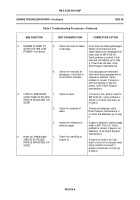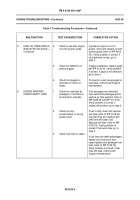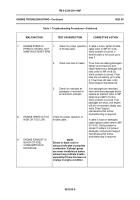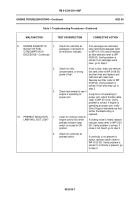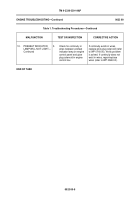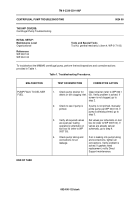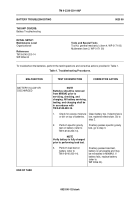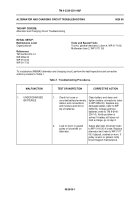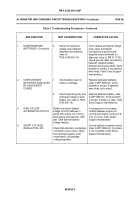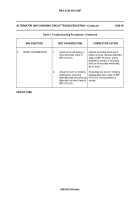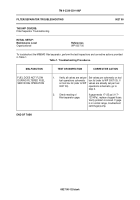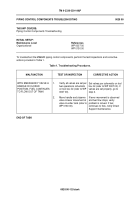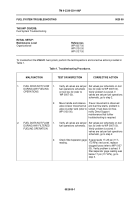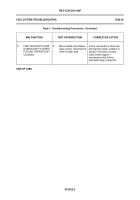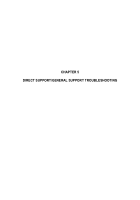TM-9-2330-330-14-P - Page 156 of 1116
TM 9-2330-330-14&P
0026 00-2
ALTERNATOR AND CHARGING CIRCUIT TROUBLESHOOTING—Continued
0026 00
Table 1. Troubleshooting Procedures—Continued
MALFUNCTION
TEST OR INSPECTION
CORRECTIVE ACTION
1.
UNDERCHARGED
BATTERIES—Continued
2.
OVERCHARGED
BATTERIES (INDICATED
BY HIGH WATER
USAGE)
3.
HIGH OR LOW
ALTERNATOR OUTPUT
4.
SHORT VOLTAGE
REGULATOR LIFE
3.
Check for excessive
voltage drop between
alternator and batteries
(refer to
TM 9-6140-200-14).
1.
Check battery case for
cracks or damage.
2.
Check specific gravity and
individual voltage of each
battery cell (refer to TM 9-
6140-200-14).
Obtain and record battery
voltage for both batteries in
series with engine not running.
Start engine and adjust to 1000
rpm. Take another battery
voltage reading.
Check that alternator and battery
connections are correct. (Note
that reversed polarity, even
momentarily, will damage
voltage regulator).
If test reveals excessive voltage
drop, clean and tighten
connections at positive and
negative output terminals on
alternator (refer to WP 0117 00).
Check ground cable connections
between negative battery
terminal and engine frame. Verify
problem is solved. If connections
were okay, notify Direct Support
maintenance.
Replace damaged batteries
(refer to WP 0056 00). Verify
problem is solved. If batteries
were okay, go to step 2.
Replace defective battery (refer
to WP 0056 00). Verify problem
is solved. If battery is okay, notify
Direct Support maintenance.
If voltage does not increase
notably between engine not
running and engine running (0.6
V dc or more), notify Direct
Support maintenance.
Correct battery connection errors
(refer to WP 0056 00). If problem
is not corrected, notify Direct
Support maintenance.
Back to Top

